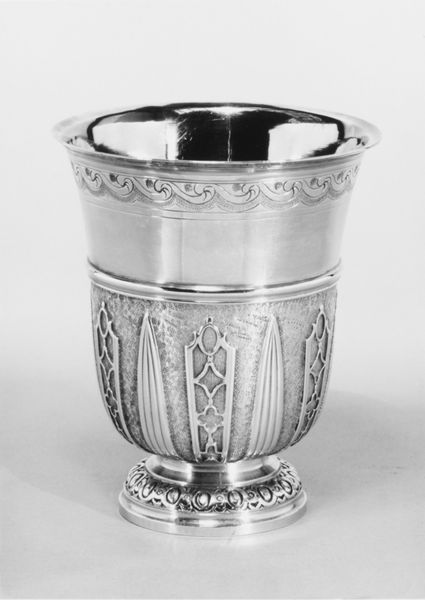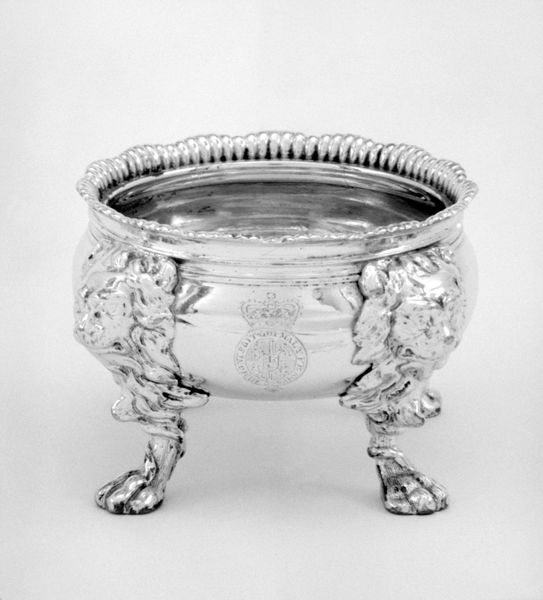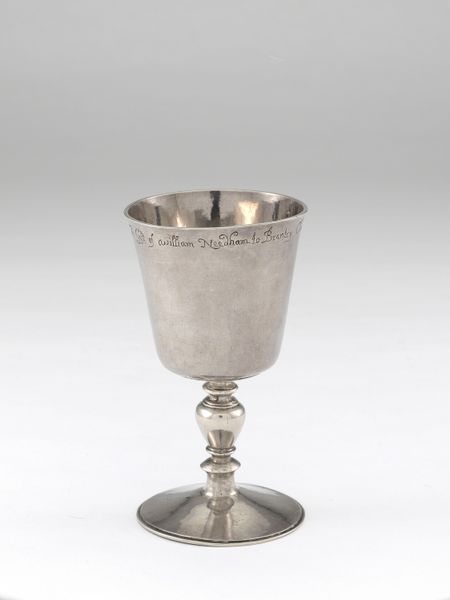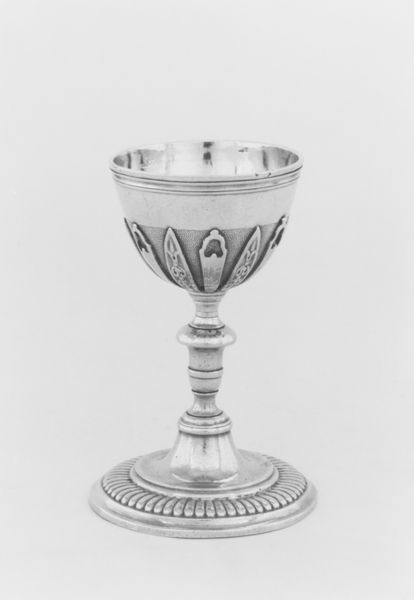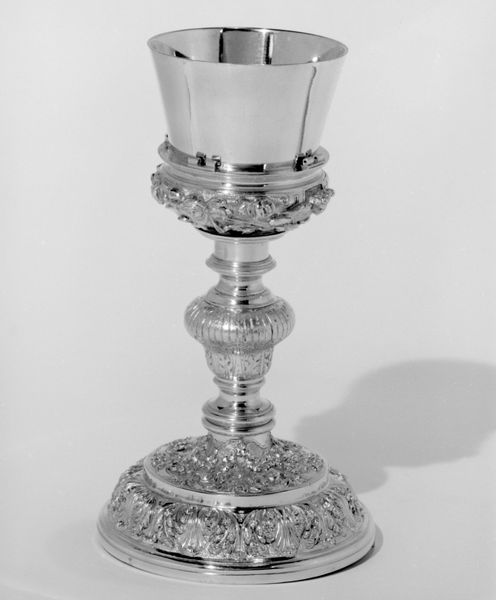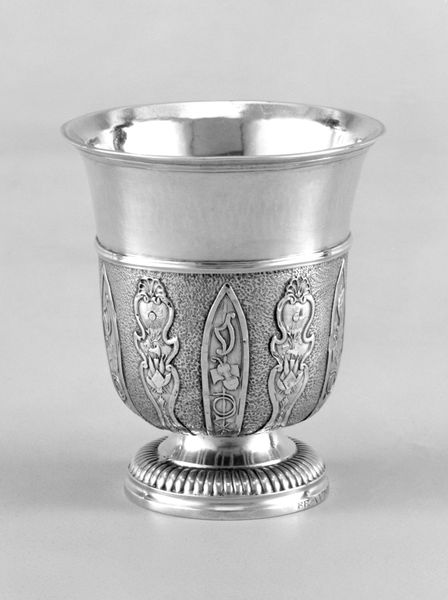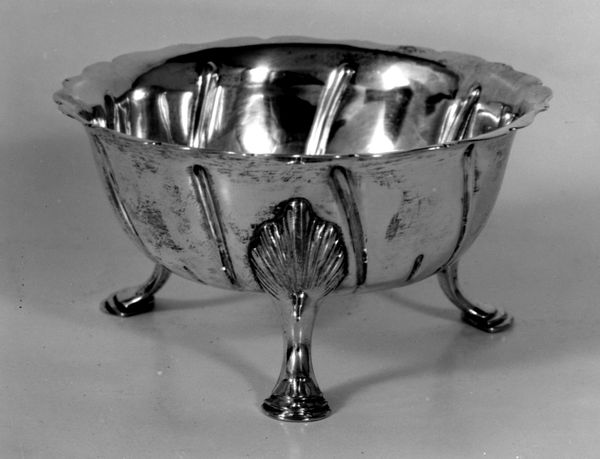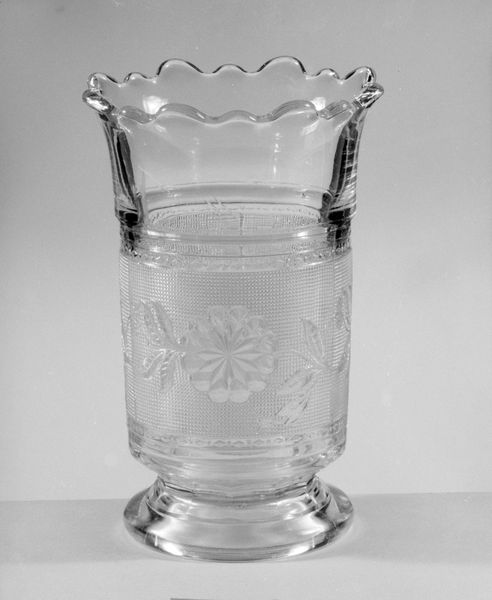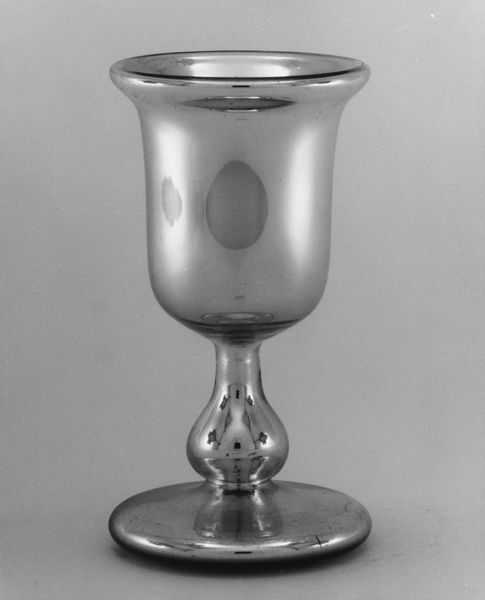
silver, metal, sculpture
#
silver
#
metal
#
black and white theme
#
stoneware
#
sculpture
#
decorative-art
Dimensions: Height: 3 1/2 in. (8.9 cm)
Copyright: Public Domain
Editor: Here we have a 19th-century silver beaker, attributed to Franchi and Son, currently residing at the Metropolitan Museum of Art. I’m struck by how intricate the craftsmanship is – all those tiny details. What's your take on this, what story does it tell? Curator: For me, it speaks volumes about 19th-century metalworking. Consider the labour involved: the silversmithing techniques, the chasing, the forming. These weren't mass-produced; this represents skilled artisans applying specialized labor to a specific end. Can you imagine the social structures supporting this level of detail on a drinking vessel? Editor: So you see the piece as less about, say, aesthetic beauty, and more about understanding the means of its creation? Curator: Exactly. The very materials chosen—silver, a precious metal—highlight its role in a system of wealth and status. The artistry also served the role of showing that wealth through intensive labor that created something beautiful and luxurious for display. Editor: That's fascinating. So the act of drinking from this becomes almost a performance of wealth? Curator: Precisely! Who owns it, who uses it, on what occasions? These questions open up discussions around social hierarchies and patterns of consumption that often underpin art objects of this era. The “black and white theme” the AI mentioned is really just the visual result of its metallic origins, in that way even AI confirms what it is made of is what gives it shape, both literally and historically! Editor: So it's not *just* a beaker, it's a material record of its time. I hadn't thought of it that way, I was too busy focusing on aesthetics! Curator: And that's the exciting part, isn’t it? Looking beyond the surface and connecting the object to its world.
Comments
No comments
Be the first to comment and join the conversation on the ultimate creative platform.
